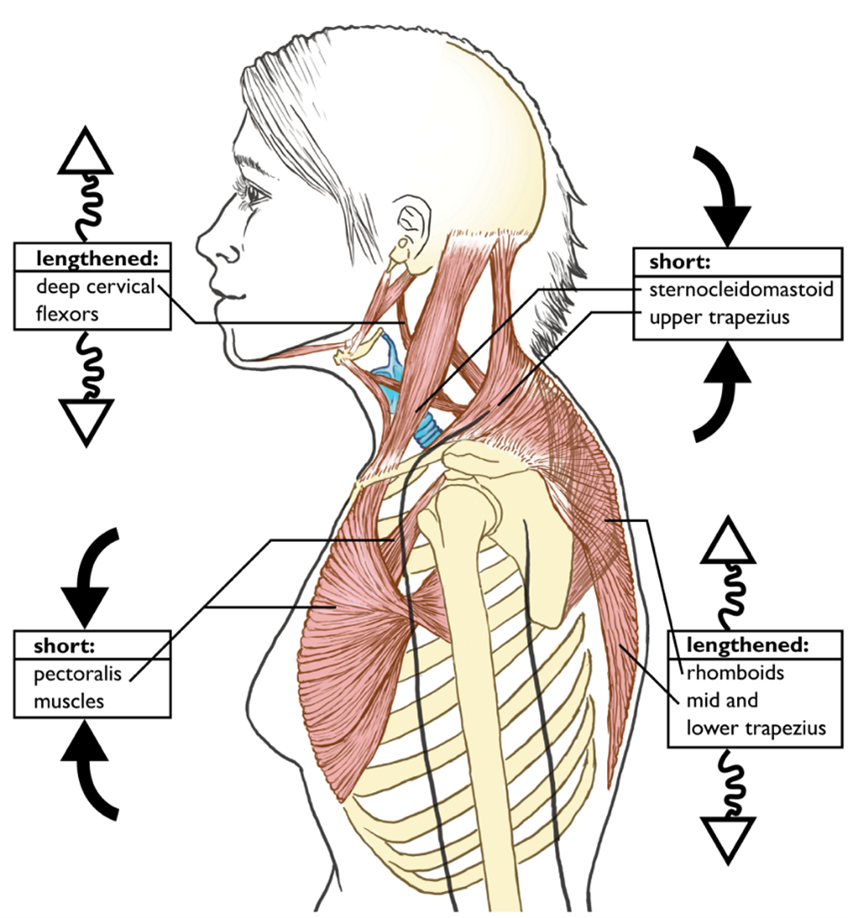The deep neck flexors are the equivalent of the core for the neck. Despite their small size they are the most important antagonists of the large cervical spine extensors. They play an enormous role in the connection and stabilization of the cervical column and the skull.
The neck bones are like kids building blocks that must be kept aligned against one another with millimetre level precision while you move, due to then nature of what’s running through them: the spinal nerves and the spinal cord.
So, when any individual bone isn’t held precisely at a certain angle against the one next to it, complications can occur, such as a pinched nerve and muscle or neural pain and or headaches. Research has shown that weak deep neck flexors are associated with headaches and those headaches tend to go away with strengthening exercises.
The 4 main muscle which hold these cervical bones aligned are called the deep neck flexors, and they consist of the longus colli, longus capitus, rectus capitus and longus cervicus. All help you maintain neck stability and good posture. Studies published in 2016 report that about 70% of people with chronic neck pain become weaker in the neck flexors. This is where posture comes into play.

Posture
Inappropriate load (e.g. sitting for long periods) and abnormal pattern of posture (eg forward head posture and rounded shoulders) cause a permanent contraction of the cervical spine extensors which cannot be balanced by the deep neck flexors in the long term. Meaning that our deep neck flexors become underactive and our cervical spine extensors become overactive. Hyperlordosis of the cervical spine follows, often resulting in neck pain/chronic neck pain and or headaches. For prevention of neck pain and injuries, improving posture and strengthening the deep neck flexors is vitally important.
Exercise
As with any other part of the body, part of rehabilitation (or prevention of injury) is to re-strengthen the injured/vulnerable area, in this case with the deep neck flexors.
Activation of the deep neck flexors helps maintain the natural lordosis of the cervical spine.
Exercise is safest to commence under the guidance of an expert, but in short the exercises will be aimed at strengthening the deep neck flexors and de-loading the compensatory muscles of the cervical spine extensors.



